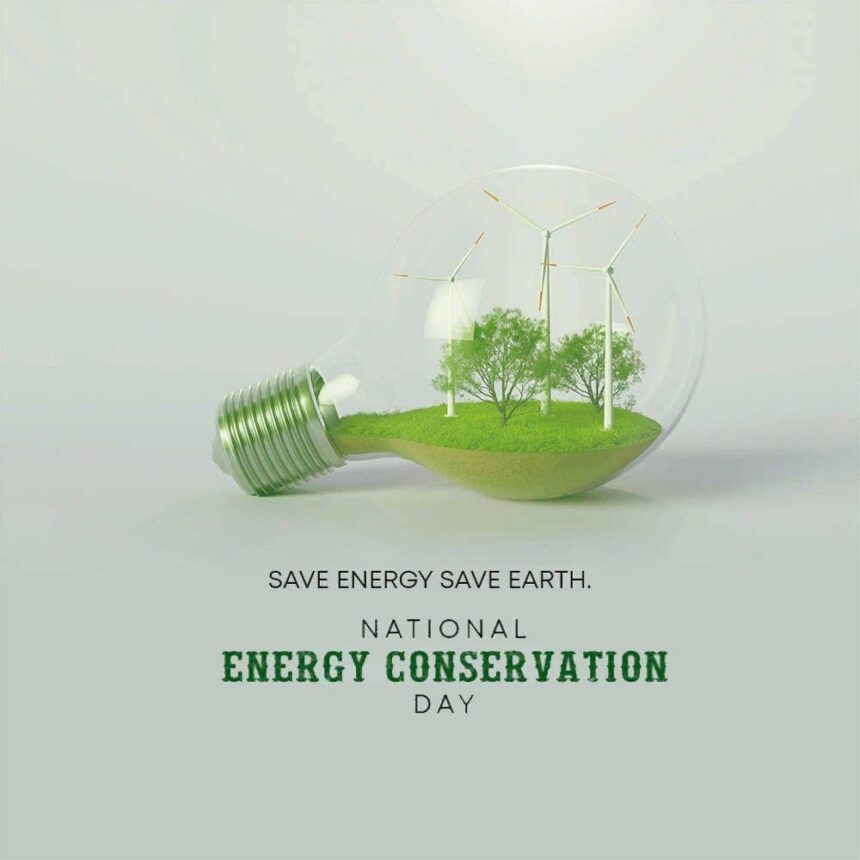🌍 Introduction – What is National Renewable Energy Day?
National Renewable Energy Day is celebrated in India every year on 20th August to raise awareness about renewable energy resources such as solar, wind, biomass, hydro, and geothermal energy. The word renewable itself symbolizes endless power from nature that can meet our needs without exhausting the planet.
- 📜 History of National Renewable Energy Day
- 📅 Timeline of Renewable Energy & National Day Observance
- 🔎 Interesting Facts About National Renewable Energy Day
- 🌟 Significance of National Renewable Energy Day
- 🙌 Observance of National Renewable Energy Day
- 💡 Importance of Renewable Energy in Daily Life
- 🎉 Wishing on National Renewable Energy Day
- ❓ FAQs on National Renewable Energy Day
- 📝 Review Section – National Renewable Energy Day Today
- ✅ Conclusion – Why National Renewable Energy Day Matters
- If we make renewable energy a part of our lives, we are not only saving money and protecting health but also building a sustainable future for generations to come.
The day is also known as Akshay Urja Diwas in India, where Akshay means inexhaustible and Urja means energy. It is more than a celebration — it is a reminder of our responsibility to move away from fossil fuels and embrace a cleaner, greener future.
📜 History of National Renewable Energy Day
Global Context – The oil crisis of the 1970s forced nations to search for alternatives to coal and petroleum. Over time, renewable energy emerged as a sustainable solution.
Indian Initiative – In 2004, the Ministry of New and Renewable Energy (MNRE), Government of India, started observing National Renewable Energy Day.
Tribute to Rajiv Gandhi – The day also coincides with the birth anniversary of former Prime Minister Rajiv Gandhi (20th August), who was a strong advocate of technological progress, energy security, and environmental responsibility.
Awareness Campaigns – Since its inception, schools, universities, NGOs, and industries have taken part in exhibitions, rallies, and energy awareness drives to mark the occasion.
📅 Timeline of Renewable Energy & National Day Observance
1970s – Oil shocks highlight the importance of alternate energy.
1980s – First renewable energy projects (small solar and wind plants) launched in India.
1992 – Rio Earth Summit stresses clean energy adoption.
2004 – National Renewable Energy Day (Akshay Urja Diwas) officially launched in India.
2010 – India’s National Solar Mission begins, targeting 100 GW solar capacity.
2015 – Paris Agreement sets global climate and renewable energy goals.
2022 – India ranks third in the world for renewable energy production.
2030 (Future Goal) – India aims to achieve 500 GW renewable capacity and net-zero by 2070.
🔎 Interesting Facts About National Renewable Energy Day
India is the third-largest producer of renewable energy in the world.
Renewable Energy Day is also called Akshay Urja Diwas in India.
The Bhadla Solar Park in Rajasthan is the largest solar power plant in the world, with 2,245 MW capacity.
Nearly 40% of India’s installed electricity capacity now comes from renewable sources.
Globally, renewable energy provides employment to over 12 million people.
The cost of solar power has fallen by 85% since 2010, making it cheaper than coal.
Countries like Denmark and Germany generate more than half of their electricity from renewables.
India has also started working on green hydrogen projects, seen as the fuel of the future.
Students and youth are considered the most important ambassadors of this day, spreading awareness about sustainable living.
🌟 Significance of National Renewable Energy Day
The significance of this day is far-reaching:
Climate Protection – Reduces carbon emissions and fights global warming.
Energy Independence – Decreases dependence on costly fossil fuel imports.
Economic Growth – Creates millions of green jobs and boosts clean-tech startups.
Rural Empowerment – Brings light and development to villages through solar micro-grids.
Health Benefits – Cleaner air and reduced pollution improve public health.
Global Responsibility – Aligns India with international commitments to the Paris Agreement and SDGs.
🙌 Observance of National Renewable Energy Day
How the day is observed across the country:
Government – Announces new policies, projects, and incentives for solar, wind, and EV adoption.
Schools & Colleges – Organize debates, poster-making competitions, and science exhibitions.
NGOs – Conduct street plays, awareness campaigns, and workshops in rural areas.
Corporate Sector – Launch sustainability initiatives, EV fleets, and carbon-neutral programs.
Individuals – Celebrate by conserving energy, planting trees, or even considering rooftop solar.
💡 Importance of Renewable Energy in Daily Life
Lower Costs – Solar rooftops reduce electricity bills.
Clean Transportation – EVs cut fuel expenses and reduce pollution.
Rural Development – Off-grid solar solutions empower villages with 24×7 electricity.
Healthier Lives – Reduction in smog and air pollution decreases respiratory issues.
Climate Safety – Less reliance on fossil fuels reduces global warming risks.
Future Security – Ensures sustainable resources for future generations.
🎉 Wishing on National Renewable Energy Day
Spread positivity with these wishes:
🌞 “This National Renewable Energy Day, let’s embrace the limitless power of the sun and wind for a greener tomorrow.”
🌍 “Happy Renewable Energy Day! May clean energy light up every home and heart in the world.”
⚡ “On this special day, let’s pledge to adopt renewable energy and create a healthier Earth for generations to come.”
❓ FAQs on National Renewable Energy Day
Q1. When is National Renewable Energy Day celebrated?
On 20th August every year in India.
Q2. Why is it also called Akshay Urja Diwas?
Because Akshay means inexhaustible and Urja means energy, symbolizing renewable sources.
Q3. Who started this observance?
The Ministry of New and Renewable Energy (MNRE), Government of India, started it in 2004.
Q4. Why is renewable energy important?
It is clean, sustainable, and reduces dependence on polluting fossil fuels.
Q5. How can common people contribute?
By saving electricity, using renewable options like solar, and supporting eco-friendly products.
📝 Review Section – National Renewable Energy Day Today
👍 Positive Review
The day has been successful in raising awareness, especially among youth and students.
It has boosted solar and wind adoption across India, with impressive government targets.
Many green startups credit Akshay Urja Diwas awareness programs for inspiring their journey.
👎 Critical Review
Critics argue that awareness is still low in rural and semi-urban areas.
The high initial cost of rooftop solar and EVs discourages many families.
Implementation of large renewable projects sometimes faces land and grid challenges.
Overall Verdict
Despite challenges, National Renewable Energy Day is seen as an inspiring, hopeful initiative. It serves as a yearly reminder that India must accelerate its transition to green energy to ensure economic growth and environmental survival.
✅ Conclusion – Why National Renewable Energy Day Matters
National Renewable Energy Day is not just an observance — it is a movement of responsibility and hope. It inspires citizens, governments, and businesses to work together for a cleaner Earth.
It teaches us that renewable energy is not just about big solar farms or wind turbines, but about our daily lifestyle choices. From turning off lights to choosing electric mobility, every small step matters.
🌍 This day urges us to realize that the power of nature is infinite, but our survival depends on how wisely we use it.








